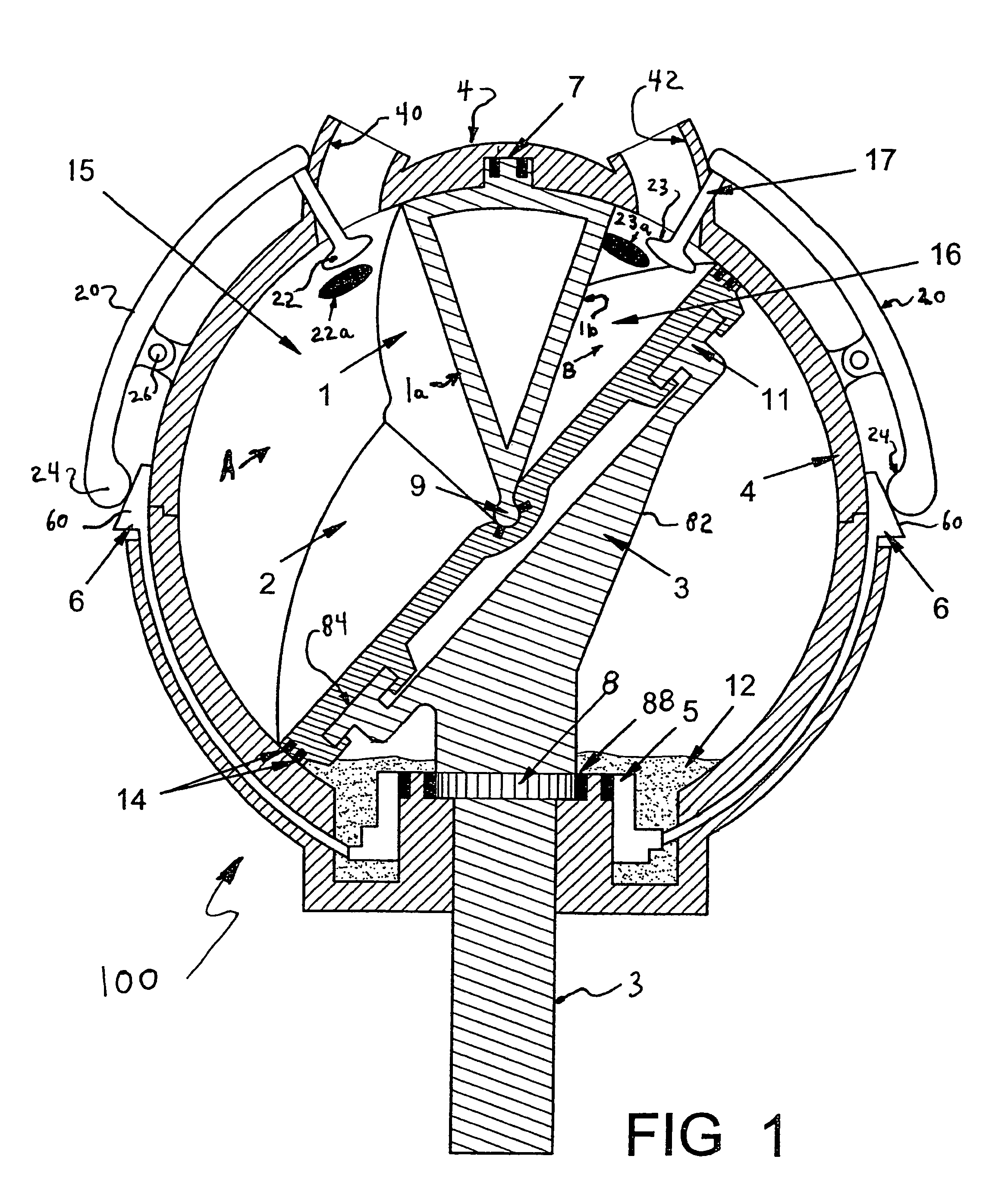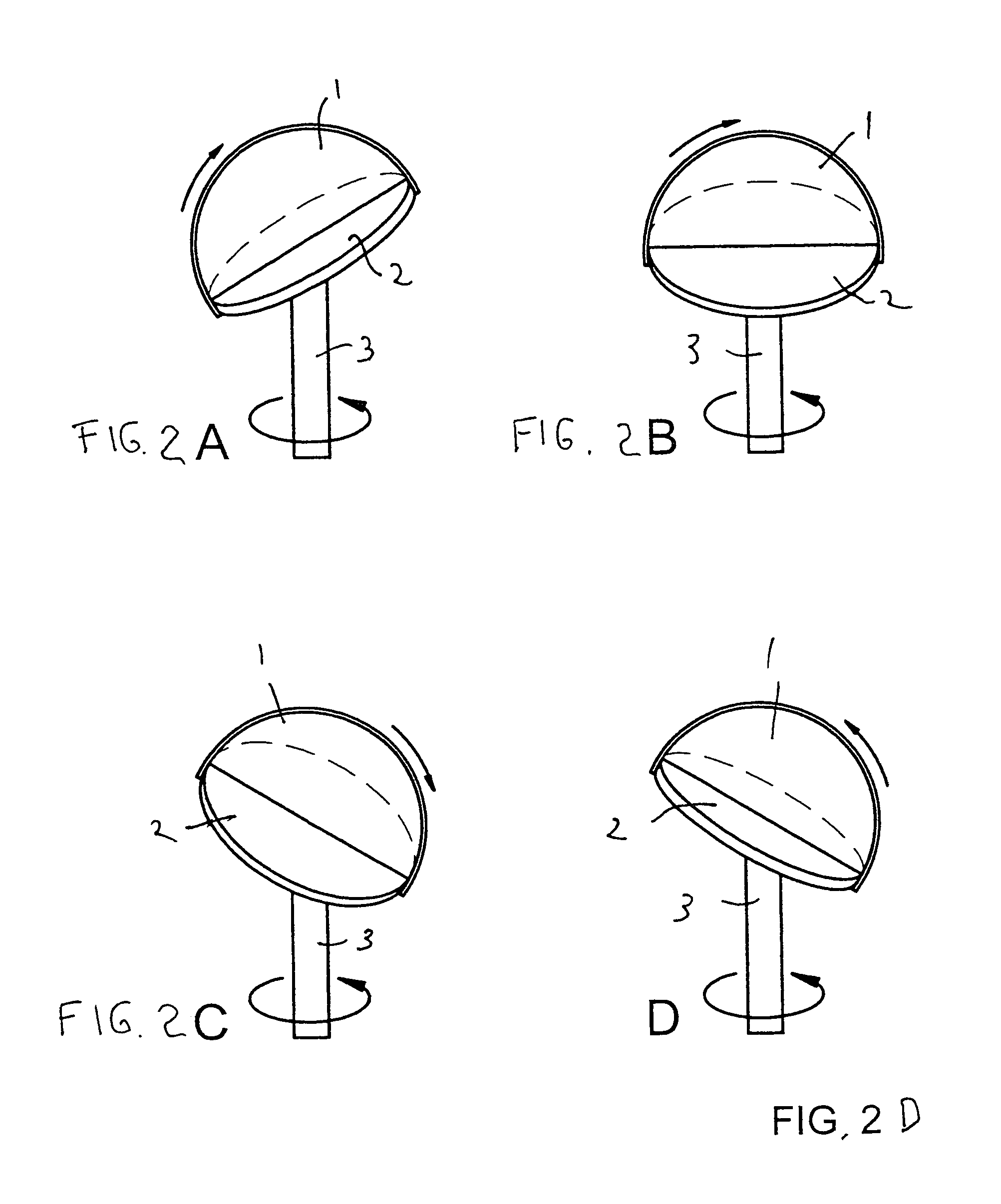VAL rotary engine
a rotary engine and cylinder head technology, applied in the direction of rotary piston engines, engine lubrication, medical atomisers, etc., to achieve the effect of less waste heat generation, less friction, and improved efficiency
- Summary
- Abstract
- Description
- Claims
- Application Information
AI Technical Summary
Benefits of technology
Problems solved by technology
Method used
Image
Examples
Embodiment Construction
[0043]FIG. 1 shows a schematic, side sectional view of a rotary engine 100 according to the present invention. The rotary engine 100 includes a spherical member 4 housing a first baffle member 1 and a second baffle member 2. The spherical member 4 also houses a rotor 3 which is connected to a shaft extending beyond the spherical member 4. The spherical member 4 has four ports, two in each chamber. As viewed in FIG. 1, there is four ports 17 which include openings 40, 42, 22a, and 23a. Such ports are conventional in internal combustions engines and no further description is necessary inasmuch as the skilled artisan will understand how to place and operate such ports. The valves 22 and 23 are respectively disposed so as to open and close openings 22a and 23a.
[0044]The first baffle member 1 and the second baffle member 2 together divide the interior of the spherical member 4 into a first combustion chamber 15 and a second combustion chamber 16, as seen in FIG. 1. The first baffle memb...
PUM
 Login to View More
Login to View More Abstract
Description
Claims
Application Information
 Login to View More
Login to View More - R&D
- Intellectual Property
- Life Sciences
- Materials
- Tech Scout
- Unparalleled Data Quality
- Higher Quality Content
- 60% Fewer Hallucinations
Browse by: Latest US Patents, China's latest patents, Technical Efficacy Thesaurus, Application Domain, Technology Topic, Popular Technical Reports.
© 2025 PatSnap. All rights reserved.Legal|Privacy policy|Modern Slavery Act Transparency Statement|Sitemap|About US| Contact US: help@patsnap.com



